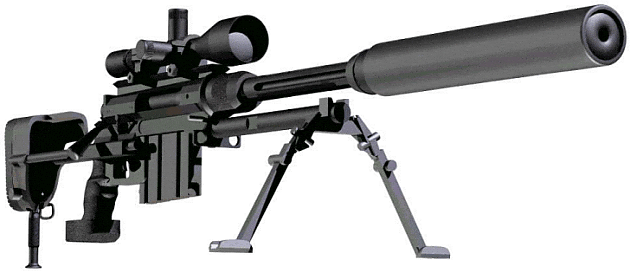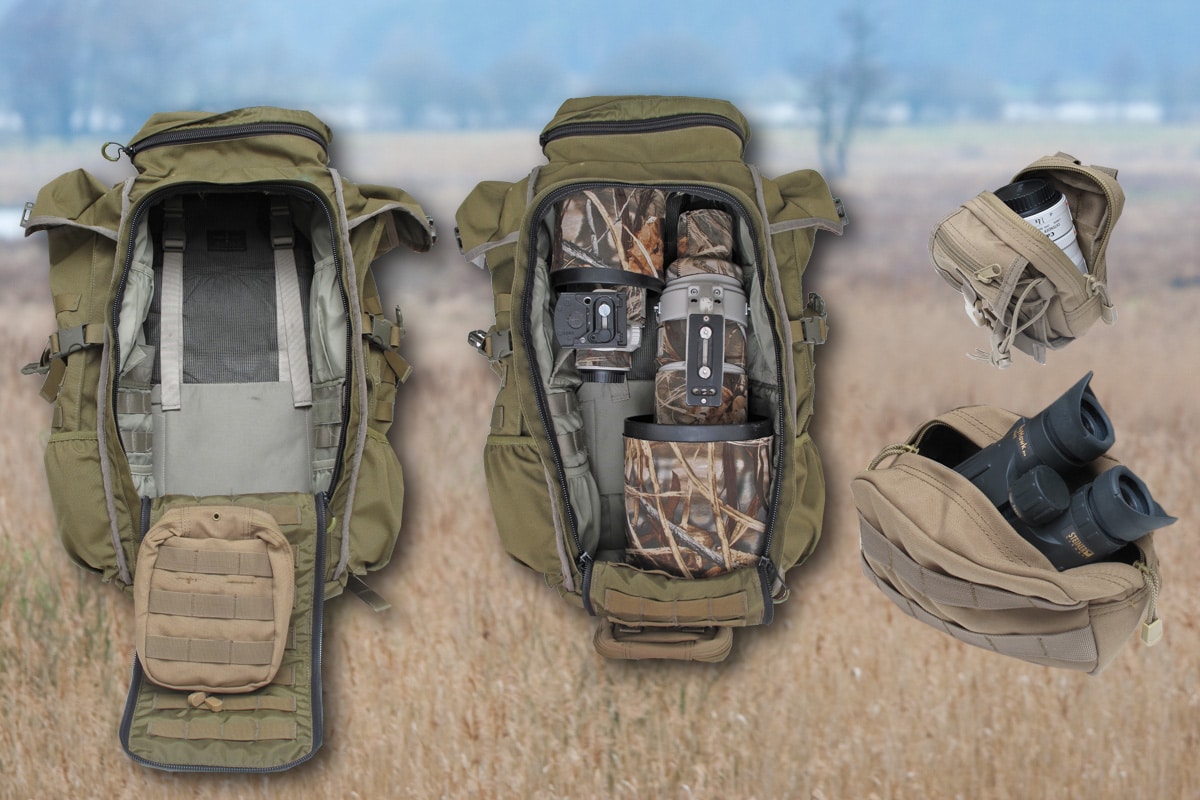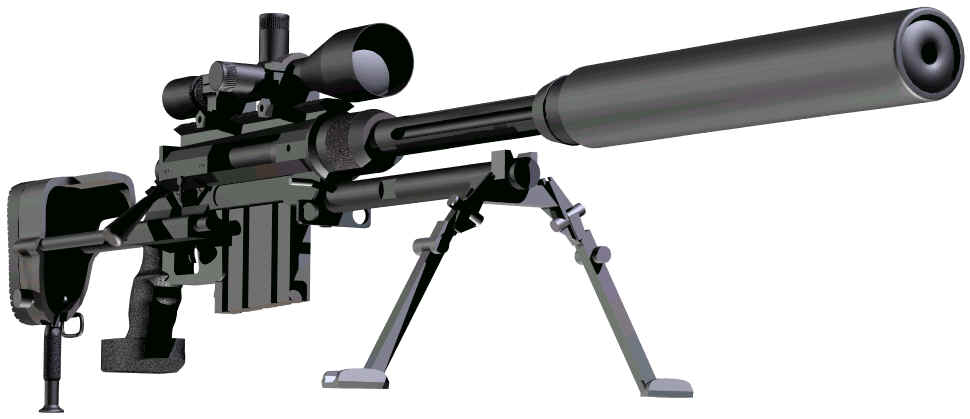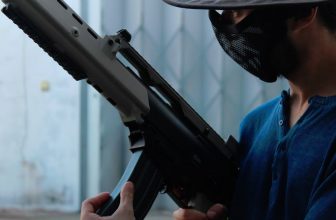

![]()

– Part I –
The end of the U.S.-Soviet superpower rivalry drastically diminished the prospects of a global nuclear confrontation, but it unleashed pent-up global non-nuclear confrontations as well as pent-up ethnic, religious and territorial disputes that were simmering beneath the surface of the Cold War security system.
The result has been steadily increasing conflicts ranging from North Africa to Central Europe to the states of the former Soviet Union. These new wars have challenged the capacity of the United Nations, the United States, NATO, or any other combination of powers to deal with them, leaving open the possibility for a continued escalation of the size and scope of these conflicts to levels that could rival the most violent episodes of the Cold War era. However, before any major escalation of consequence develops, it is anticipated that a number of limited conflicts will continue to emerge with some leading to a major escalation. In many cases, this escalation will be seen against a background of terrorist activities.
In a changing environment, nations are now reviewing the capabilities of existing weapon systems and planning for new ones. With the latter, these nations are especially interested in novel and re-designed weapon systems that can best fit the challenges of limited conflicts and terrorist activities.
AN EMERGING THEME FOR NOVEL AND RE-DESIGNED WEAPON SYSTEMS:
Current logic behind emerging weaponry includes long-range precision control, and when necessary, surgical removal of situations resulting from limited conflicts and terrorist activities. Thus, one of the common threads is long-range tactical precision. Long-range tactical precision is the weapon’s ability to launch a projectile over a great distance, and precisely to find and eliminate the target without damaging the immediate surroundings. Long-range tactical precision ranges from long-range missiles fired from tactical aircraft to long-range bullets fired from tactical rifles.
TACTICAL RIFLES AND THEIR CARTRIDGES
Tactical rifles of both turn-bolt actions or semi-automatic designs, are emerging from various U.S. and European manufacturers in order to meet an increasing stringent demands by today’s military and police organizations. At the one end of the spectrum, existing rifle platforms, designed for game hunting, are being up-graded to tactical status, usually by cosmetic changes, while at the other end of the spectrum are rifles designed especially for precision tactical shooting. The cartridges being used include the 5.56x45mm NATO (.223 Remington), the 7.62x51mm NATO (.308 Winchester). To a lesser extent, and in an attempt to maintain accuracy over a longer range, the 7mm Remington Magnum, .300 Winchester Magnum, and the new .338 Lapua Magnum are currently being used, but have not represented “mainstream” cartridges.
Generally in the hands of a qualified shooter, the 5.56x45mm NATO is capable of a maximum precision range up to 500 meters; the 7.62x51mm NATO is capable of a maximum precision range up to 700 meters; and the .300 Winchester Magnum is capable of a maximum precision range up to 900 meters. “Precision” is defined here as 1 MOA or better. Some readers will contest these maximum ranges as examples of precision shooting performed at greater distances do exist. Some of these examples, will be mentioned; however, these generalized values are presented here for “benchmark” purposes only.
The .338 Lapua Magnum cartridge has emerged as a cartridge that extends the maximum precision range of 700 meters, found with the 7.62x51mm NATO, out to 1,300 meters. It should be noted that in this caliber, Dakota Arms guarantees 0.5 MOA for it’s T-76 Longbow out to 1,500 meters and Arnold Arms advertises that its Mark II can shoot 3.5-inch and 4-inch groups at 1,600 yards (1,290 meters); in both cases, in the hands of a qualified shooter using appropriate ammunition.
Finally, specialty cartridges, best exemplified by the .243 Winchester and the .50 Browning are also used in tactical situations. The .243 Winchester has been proposed by Plaster (1) for urban counter-sniping because, unlike the 5.56x45mm NATO, it can penetrate automobile glass. However, it does not possess the energy to ricochet through building walls as is the case with the 7.62x51mm NATO, an important characteristic for urban areas where innocent bystanders are numerous.
The .50 Browning is found at the end of the spectrum representing large calibers. It was originally designed as an anti-material cartridge and is capable of a maximum range up to 2,800 meters. Some manufacturers guaranteed 0.5 to 1 MOA in the hands of a qualified shooter using appropriate ammunition. I suspect the guarantee is for 1,000 yards or meters and not beyond.
Thus, up to 1,200 meters, a spectrum of ammunition exists which meets the requirements of the tactical shooter. Beyond 1,300 meters, many would argue that the .50 Browning is the logical choice. One might ask, “Logical choice for what …anti-personnel or anti-material?” Beyond 1,300 meters, the advantage of anti-material has been shown to be more important than anti-personnel. The .50 Browning is not intended for anti-personnel deployment, but rather hard targets such as trucks, armor personnel carriers, aircraft, and communications installations. However, it has been used as an anti-personnel cartridge on an ad hoc basis because nothing else is consistently viable past 1,300 meters. Legends have been established on successful ad hoc shootings.
SHOULD THE .50 BROWNING SERVE A NEW TACTICAL NICHE?
Cartridges proven for tactical situations exist for anti-personnel shooting out to 1,300 meters. Beyond 1,300 meters, there may be a tendency to use the .50 Browning even though its advantages are weighted toward anti-material rather than anti-personnel. The question now becomes whether the .50 Browning should be adopted as a 1,300-plus meter caliber for anti-personnel shooting on a routine rather than an ad hoc basis.
As a general rule, the platform becomes larger and heavier as a consequence of using larger calibers with heavier bullets to obtain longer ranges. It seems reasonable that an unloaded, scoped rifle would no longer be considered tactical when its weight exceeds 18 pounds and its barrel length exceeds 30 inches. Beyond these values, the rifle is too heavy and unwieldy to be handled by one man for extended periods of time. Some may argue that these specifications are too high while others may argue that they are too low. In order to establish a benchmark, I propose that the 18-pound/30-inch specification serve as the upper limit until convincing arguments can be brought forth or a consensus reached to the contrary.
Manufacturers of .50 caliber tactical rifles have recognized the need for a light and easy handling rifle. A review of several existing unscoped .50 caliber rifles reveals the Barrett’s turn-bolt Model 95 at 22.5 pounds with a 29-inch barrel and semi-automatic Model M82A1 at 30 pounds with a 29-inch barrel; the Pauza’s semi-automatic P-50 at 30 pounds with a 29-inch barrel; and the McMillan Bros’ 50 Caliber Tactical at 27 pounds with a 29-inch barrel. These rifles do not exceed the 30-inch barrel specification, but do exceed the 18-pound weight limit previously mentioned. The Barrett Model 95 and the McMillan Bros Tactical approach the weight requirements.
It appears that a case can be made — but just barely — for the .50 Browning serving as anti-personnel in addition to its accepted role as anti-material tactical cartridge beyond 1,300 meters. In other words, an established anti-material caliber could serve as an anti-personnel caliber providing that it’s being launched from a light enough platform. If this logic is sound, then one might want to examine the possibility whether the .338 Lapua Magnum, which is an established anti-personnel caliber, could serve as an anti-material caliber. Clearly the platform for the .338 Lapua Magnum fits the tactical rifle specifications. With this scenario, the .338 should be able to extend its primary anti-personnel role into a limited anti-material role, while the .50 would assume an anti-personnel role in addition to its established anti-material role.
SHOULD THE .338 LAPUA MAGNUM SERVE A NEW TACTICAL NICHE?
Thus, the .338 and .50 would serve as a continuum between anti-personnel and anti-material. But is the .338 up to the task? Several rifle manufacturers have promoted the .338 Lapua Magnum as a lighter alternative to the 750 to 800-gr. .50 Browning bullet with a muzzle velocity of approximately 2,700 fps. Lapua Ltd. offers a .338 cartridge with their Lock Base® 250-gr. bullet at an advertised 3,002 fps which offers substantial improvements in downrange energy as well as maximum precision range over the .300 Winchester Magnum. This bullet is intended for long-range shooting. A second .338 offering by Lapua Ltd. launches a FOREX® Tactical 260-gr. at an advertised 2,870 fps. This bullet is intended for short-range anti-glass shooting. The bullet’s base is hollow which shifts the weight bias forward. Lapua Ltd. in its promotional literature shows images of amour-piercing incendiary .338 Lapua Magnum cartridges, but to my knowledge the characteristics of this cartridge have not been reported. From a payload standpoint, a 250-gr. .338 caliber bullet can not come close to serving as an effective long-range anti-material bullet when compared to the heavier .50 Browning bullet (2).
Origin of the .338 Lapua Magnum cartridge is the Research Armament Industries’ (RAI) 8.58x71mm cartridge, based on a necked-down and shorten by 0.18-inch .416 Rigby case. It was designed in the early 1980s as a new .338/7.62x51mm NATO convertible Model 300 sniper rifle RAI built for the U.S. Navy. The Model 300 was the step below the .50 RAI Model 500, better known as the Haskins rifle. The converted.416 Rigby cartridge case falls short of launching an adequate long-range anti-material cartridge even when a 350-gr. .375 bullet is considered (3).
I propose that what is required is a bullet, with a caliber and corresponding weight between the .338 Lapua Magnum and the .50 Browning, and launched from a cartridge case large enough to take advantage of the new bullet’s weight to yield the highest possible downrange energy.
DESIGN OF A NOVEL 2000-METER TACTICAL CARTRIDGE
In designing a new tactical cartridge that would fill the gap between the .338 Lapua Magnum and the .50 Browning, criteria must be established. It seems reasonable that the caliber should be between .338 and .50; i.e., approximately .420; weight of the bullet should be between the 250 and 750 grains; i.e., approximately 500 grains; and the maximum precision range should be between 1,300 and 2,800 meters; i.e., approximately 2,000 meters. Without specially designed cartridge cases, chamber pressures should not exceed the low 60s Kpsi.
In order to achieve the 2,000-meter mark with a 500-gr. bullet, a cartridge case with a volume larger than the .338 Lapua Magnum is required. A convenient approach would be to neck-down the .50 Browning and to use a receiver whose bolt face would accommodate the .50 Browning cartridge case. A third approach would be to design a new cartridge case from scratch. This is probably the best approach, but would be cost-prohibitive. The third approach would be to use an existing large capacity cartridge with a smaller rim diameter than the .50 Browning. The requirement would be that it could be used in a long-magnum receiver where its bolt face would accommodate the rim diameter.
A comparison of rim diameters and total case volume suggest that the .585 Van Horn Express, the .505 Magnum Gibbs (aka .505 Gibbs) and the .470 Royal might be good choices (see Table I). The .585 Nyati probably should not be considered because its rebated rim could be detrimental in a tactical situation. The .585 Nyati is composed of a .570 Nitro case and .505 rebated rim. The total case volume of the .585 Van Horn Express is 248 grains of water while the .505 Gibbs and .470 Royal are similar with 227 and 222 grains of water respectively. The lack of readily available cartridge cases would present serious handicaps for the .585 Van Horn Express and the .470 Royal which would leave the .505 Gibbs as the prime candidate. .505 Gibbs cartridge cases can be purchased from A-Square, Bertram Bullet, and HDS.
Like the .416 Rigby that was used as the parental cartridge case for the .338 Lapua Magnum, the .505 Gibbs is an old English big game cartridge that was designed to accommodate 40 Kpsi pressures. One of the disadvantages to these old cartridge cases is the thickness of the sidewall just forward to the web. During ignition, the cartridge’s base, forward to the bolt face, is not supported. The case is driven back against the bolt face which results in the stretching of the case, particularly the sidewall immediately forward of the web. When the sidewall resists the outward expansion against the chamber, the pressure stretches the case thereby increasing its length resulting in the sidewall becoming thinner at that stretch point.
If the .505 Gibbs was to be used as the cartridge case of choice, particular attention should be directed toward the case’s web and sidewall immediately forward to the web to accommodate chamber pressures reaching 60 Kpsi or higher. In modern solid-head cases, the hardness of the brass is the major factor that determines a case’s pressure limit before undergoing plastic deformation. Lapua Ltd. solved this problem when they used the .416 Rigby as the parental case to the .338 Lapua Magnum. They created a hardness distribution ranging from the head and web (hard) to the mouth (soft) as well as a strengthened (thicker) case web and sidewall immediately forward of the web. This resulted in a case which can achieve a maximum average pressure of 59 Kpsi with a recommendation not to exceed 67 Kpsi. Note: This author has measured chamber pressures on the Lapua’s cartridge case of pressures up to 63 Kpsi which revealed no visible changes in the case; however, at this pressure primers begin to flatten.
In response to my request, Bruce Bertrum of Bertrum Bullet Co. Pty Ltd. (Australia) strengthened the web of his .505 Gibbs cartridge case (Figure 1). For initial trials a diameter of .408 was chosen rather than .420. It is a solid SAE 660 bronze projectile (bullet), weighs 440 grains, and features a .408 driving band with the reminder of the shank being .400 in diameter (Figure 2). The driving band will provide a seal between the projectile and bore while at the same time, impart spin to the projectile. The driving band should minimize wear on the barrel; i.e., minimize the frictional work arising from the driving force as the projectile passes along the groove profile. It is generally accepted that the driving band should be as narrow as possible so that the radial stresses in the projectile as the driving band is “engraved” remain within permitted limits.
When seated, the projectile extends slightly below base of the cartridge case’s neck (Figure 3). Computer modeling predicts that we should be able to achieve 2,935 fps with 64.9 Kpsi with a predicted ballistic coefficient of 0.811 a3,000 fps.
The cartridge is called the .408 Cheyenne Tactical™ (.408 CheyTac™). Comparing the .408 CheyTac with a spectrum of tactical cartridge sizes, reveals that it fits nicely between the .338 Lapua Magnum and the .50 Browning (Figure 4).
Terminal ballistics will be an important consideration during the on-going development and testing of this 2,000 meter cartridge. The .408 CheyTac is intended to posses greater anti-material properties than the .338 Lapua Magnum. Projectiles with anti-material capacity, particularly armor-piercing, are referred to as kinetic energy projectiles. They produce the desired effect by kinetic energy alone. Penetration of kinetic energy projectiles depends upon the following factors: caliber, projectile energy, angle of impact and the quality of the materials of which the projectile and the armor are composed.
Kinetic energy projectiles include monobloc projectiles, hard-core projectiles, and discarding sabot projectiles. At terminal velocity, monobloc and hard-core projectiles are superior to discarding sabot projectiles, but the latter have the advantage of substantially higher muzzle and terminal velocities, so that its penetration power is correspondingly greater. The .408 CheyTac represents an example of a monoshot projectile and will be evaluated accordingly.
Table II contrasts the velocities and energies of the .338 Lapua Magnum, the .408 CheyTac and the .50 Browning. These values are computer generated and are for comparison purposes only. Energy differences between the .338 Lapua Magnum and the .50 Browning are striking. The .408 CheyTac represents a good intermediate of the three cartridges. It has approximately 55% more energy than the .338 Lapua Magnum at both 1,000 and 2,000 meters, while it has approximately 44% and 55% less energy than the .50 Browning at 1,000 and 2,000 meter respectively.
The platform selected to test the .408 CheyTac consists of a Gilkes aluminum/steel insert, long magnum receiver modified by Sea Horse of Michigan and 5 Star GR into a drop magazine repeater with a Jewell trigger. To this is added a Krieger Heavy Palma Match, chrome moly, 30-inch barrel. The barrel is braked by a McArthur PGRS muzzle brake. Chamber reamers are by Clymer Manufacturing while fire-forming jig and loading dies were by Sea Horse of Michigan.
Future studies with the .408 CheyTac will focus on its terminal kinetic energy properties in addition to internal and external ballistics. Part II will provide cartridge specifications as well as data on internal, external and terminal ballistics of this novel cartridge.
Finally, it has not escaped our attention that the .408 CheyTac would be a good candidate for replacing the 7.62x51mm NATO in the General Machine Gun category. It probably would have to be modified by increasing the body taper by 0.5 degree to obtain ideal feeding properties.
REFERENCES
(1) Plaster, J. L. The Ultimate Sniper. 1993. Paladin Press, Boulder, CO.
(2) Steadman, N. 21st Century Ammo. What Tomorrow’s Troops Will Be Shooting. Fighting Firearms. Journal of Armed Professionals. Winter 1995. Bounder, CO.
(3) Taylor, J. D. Parental Cartridge Cases... The Future. Shooter’s News. June, 1997. North Olmsted, OH.
(4) Howell, K. Designing and Forming Custom Cartridges for Rifles and Handguns. Internat’l. Cart. Arch. Stevenville, MO. 1995.








